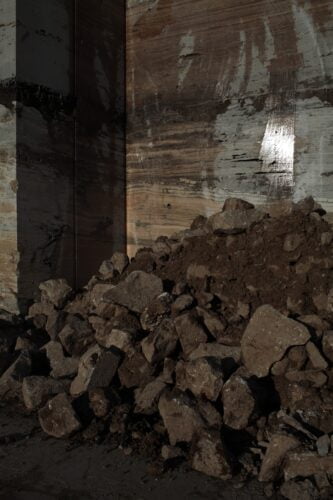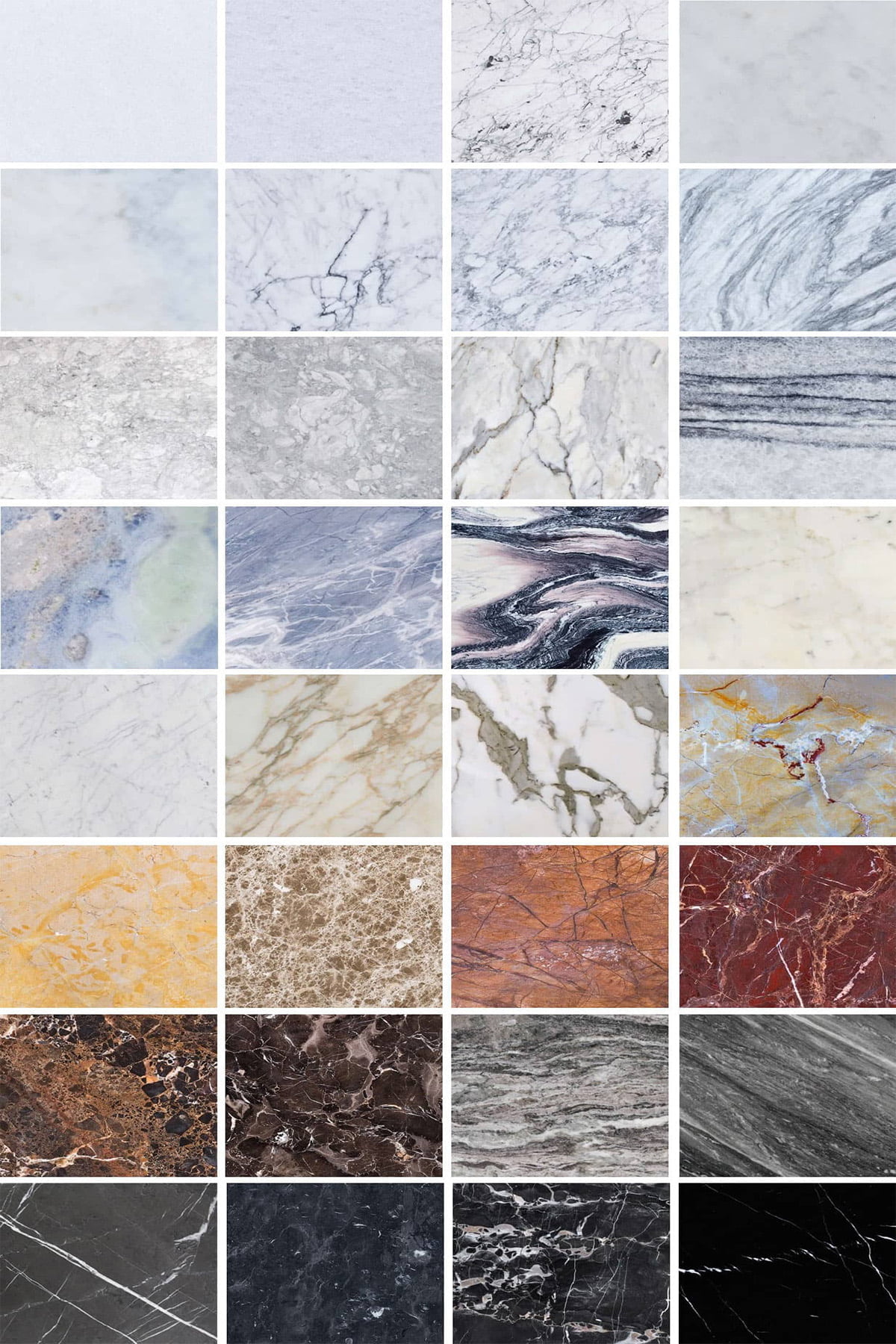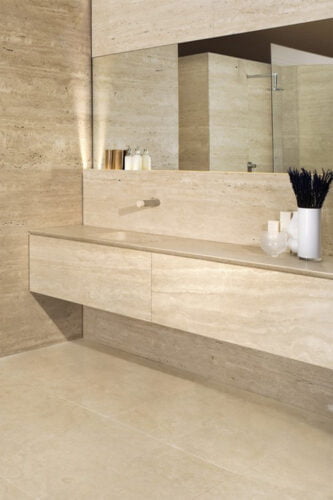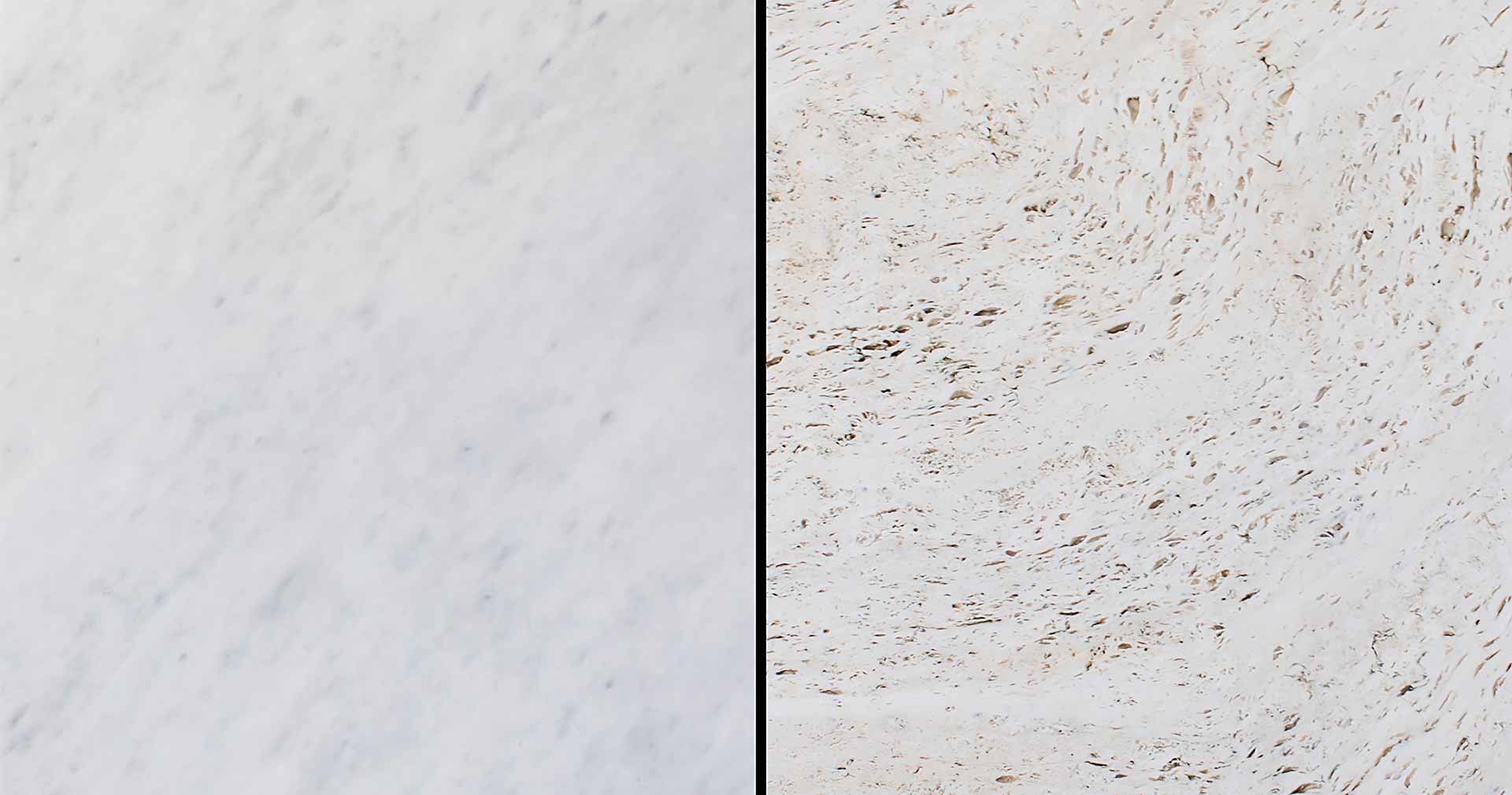What Are The Differences Between Marble and Travertine
Erroneously, travertine is considered a type marble and people frequently confuse the two. In fact, many people believe that travertine is just a fancier word for marble, but this is not the case.
Natural Stone Conformation: Travertine and Marble

Travertine and marble are very different stones created in unique environments giving them their own specific look and feel.
Marble is formed by heat and pressure in the earth’s crust. The metamorphic process from sedimentary rocks causes a complete recrystallization of the calcium carbonate. The combined action of temperature and pressure, during the transformation of the sedimentary rock into marble, leads to the progressive obliteration of the structures and textures originally present in the rock. This process leads to the destruction of any fossil, stratification or other sedimentary structure present in the original rock.
Travertine is formed under additional high pressures and temperatures, in hot springs and limestone caves. The formation of travertine is related to the rise and release on the surface, in correspondence with the outlet of springs, of thermo-mineral waters very rich in calcium carbonate (which represents the main component of travertine). Its birth, due to a continuous and progressive accumulation of carbonate material from the areas of dissolution to those of deposition, led to a sedimentation of these rocks according to parallel horizontal stratifications, sometimes marked by variations in color and diffuse porosity.
Appearance: Marble and Travertine Colors
Travertine and marble are both elegant and rare natural stones. They can vary in color range according to where they come from.
Because of this random, natural occurrence, marble comes in all different colors and textures. No two slabs of marble are alike. This is one of the reasons why, marble is so much sought after. Marble comes in a variety of colors and textures: from grey to beige, golden or dark brown or even black, blue or red. Marble appears as a single, solid color, usually with streaks of darker colors running through it. Marble may also have gorgeous patterns and natural designs which make it suitable for countertops and design elements.
Discover about our Marble Collections
Travertine typically comes in the warm, Mediterranean earth tones. Travertine’s colors are typically warm and range from the lightest white or cream to beige, gold, brown, and even red. Soft color variations between tiles keep them from looking too uniform. This type of stone is also available in a variety of finishes, including polished, honed, brushed, saw cut, and tumbled.
Discover about our Foreign and Italian Travertine Collections

Travertine and Marble Price

Price always depends on the quality of the marble or travertine you purchase. Quality is measured as a result of that specific natural stone to be faithful to determined technical specifications.
In addition, price also reflects the type of product category you look forward to purchasing: being raw blocks, slabs, cut to size in pre-cut formats, custom projects or design objects. The greater the transformation process of the marble or travertine, the higher the production cost per unit.
Visit our Atelier to learn about product categories
Regardless of the nature of natural stones, good quality marble or travertine has high costs due to the processing and selection costs it is subject to. This is because good quality travertine or marble is the result of accurate and thought through production processes in every business. Just to make a few examples:
1) Cutting and polishing machines: need to be chosen specifically for the type of stone they will process and require regular maintenance;
2) Gang saw blades: require regular care and substitution every 1000sqm cutting to avoid errors in thicknesses;
3) Finish utensils: demand replacement on a regular basis to ensure qualitative finishing (e.g. no marks on the material);
4) Resins: need to be of high quality, without risking to compromise the pores on travertine or marble surfaces.
Usability

In general, both travertine and marble are very resistant natural stones and can be used both indoors and outdoors with some precautions.
Among its many qualities, marble is a very hard stone. Marble tiles are often used on bathroom walls, floors, and countertops because they look crisp and clean while still being practical and elegant. For an edgier look, you can opt for decorative marble tiles that, again, come in a range of color patterns.
Most commonly, travertine is used indoors for bathroom flooring, but they can also be used in kitchens, outdoor spaces, and to decorate walls, ceilings, and countertops. Before being polished and honed, the tile provides a high friction surface suitable for outside use to prevent slipping. For this reason, you often see travertine tiles and pavers installed by pools. Once honed, these tiles are very easy to clean by just wiping with a damp cloth. The only other care the tiles need is a yearly sealant application. This helps your tiles resist wear and tear, allowing them to last for many years.
Discover our Projects



Follow Us On Social Media: